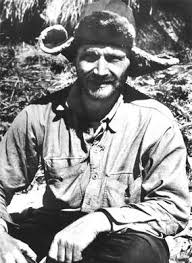The Brocken Spectre 2, or A Poem for Billo, who is still away
maybe, something there, whatever it was,
Occasional jottings
Posted by
Celia
at
14:22
0
comments
![]()
Labels: Poetry
Posted by
Celia
at
13:52
0
comments
![]()
Labels: Out and About
 I’ve just been re-reading this book, which I read for the first time last year. It still made a profound impression on me and I felt curious to find out more about Heinrich Herrer. As he didn't die until 2006, aged, I think, 93, there are obituaries and also plenty of biographical material about him on the Internet.
I’ve just been re-reading this book, which I read for the first time last year. It still made a profound impression on me and I felt curious to find out more about Heinrich Herrer. As he didn't die until 2006, aged, I think, 93, there are obituaries and also plenty of biographical material about him on the Internet.
 e fire although some might think that the Dalai Lama would welcome friends of any persuasion. In the end I felt that the question of Herrer's past and suspected political leanings didn't detract from the achievement which the book represents.
e fire although some might think that the Dalai Lama would welcome friends of any persuasion. In the end I felt that the question of Herrer's past and suspected political leanings didn't detract from the achievement which the book represents.
Posted by
Celia
at
21:38
1 comments
![]()
 Work in progress. David, the Man With The Pick-Axe, has cleared this south-facing border of nettles, brambles, rogue buddleias and much else. Jeanne and I have dug it out and, since this shot was taken, have spread around and dug in large quantities of donkey poo.
Work in progress. David, the Man With The Pick-Axe, has cleared this south-facing border of nettles, brambles, rogue buddleias and much else. Jeanne and I have dug it out and, since this shot was taken, have spread around and dug in large quantities of donkey poo.
Sam has been ever-present, checking on progress but constantly interrupting labour by attempting to beguile us into chucking his ball around. Bren has been nothing but a pain: digging a hole in the lawn and chewing up his football so that it had to be taken away and hidden high up in the laburnum tree, which was good, as trying to climb up the tree kept him fully occupied for hours.
Posted by
Celia
at
19:29
0
comments
![]()
Labels: Gardens
 ‘When I face the beauty of nature, I am no longer sensitive to art, but in the town I appreciate its myriad benefits—the more I go into the woods and the fields the more distrustful I become of art and wish all civilization to the devil; the more I wander about amidst filth and sweat the better I understand art and love it; the desire for it becomes my crying need.’ Henri Gaudier-Brzeska
‘When I face the beauty of nature, I am no longer sensitive to art, but in the town I appreciate its myriad benefits—the more I go into the woods and the fields the more distrustful I become of art and wish all civilization to the devil; the more I wander about amidst filth and sweat the better I understand art and love it; the desire for it becomes my crying need.’ Henri Gaudier-Brzeska
Posted by
Celia
at
15:52
0
comments
![]()
Labels: Books
Posted by
Celia
at
21:33
1 comments
![]()
Labels: Books

Posted by
Celia
at
18:56
0
comments
![]()
Labels: Home Thoughts
 Despite the recent storms and gales, I found primroses in bloom in Flimby woods today. That's early, for Cumbria. In my Cornish homeland, of course, they'll have been out in profusion for weeks now. These Northern plants are less prolific, more reticent, discreetly hiding beside the deepest, darkest paths, seen only by deer and rabbits - and by those who go searching for them. These sparse, hidden clumps are the modest evokers of all the springs I remember, primroses shining out from dark hollows, lining the edges of fields, carpeting the banks of streams. In the North, one learns to value such small living tokens of one's past.
Despite the recent storms and gales, I found primroses in bloom in Flimby woods today. That's early, for Cumbria. In my Cornish homeland, of course, they'll have been out in profusion for weeks now. These Northern plants are less prolific, more reticent, discreetly hiding beside the deepest, darkest paths, seen only by deer and rabbits - and by those who go searching for them. These sparse, hidden clumps are the modest evokers of all the springs I remember, primroses shining out from dark hollows, lining the edges of fields, carpeting the banks of streams. In the North, one learns to value such small living tokens of one's past.
Posted by
Celia
at
17:27
2
comments
![]()
Labels: Out and About

From "The Idea of North": an Introduction
‘When I went to the North, I had no intention of writing about or of referring to it even parenthetically in anything that I wrote. And yet, almost despite myself, I began to draw all sorts of metaphorical allusions based on what was really a very limited knowledge of the country and a very casual exposure to it. I found myself writing musical critiques, for instance, in which the - the idea of the North - began to serve as a foil for other ideas and values that seemed to me depressingly urban oriented and spiritually limited thereby.’
‘Admittedly, it's a question of attitude, and I'm not sure that my own quasiallegorical attitude towards the North is the proper way to make use of it or even an accurate way in which to define it. Nevertheless, I'm by no means alone in this reaction to the North; there are very few people who make contact with it and emerge entirely unscathed. Something really does happen to most people who go into the North - they become at least aware of the creative opportunity which the physical fact of the country represents and - quite often, I think - come to measure their own work and life against that rather staggering creative possibility: they become, in effect, philosophers. ‘
Posted by
Celia
at
11:57
1 comments
![]()
 "There is no escape from yesterday because yesterday has deformed us, or been deformed by us. The word is of no importance. Deformation has taken place. Yesterday is not a milestone which has been passed, but a daystone on the beaten track of the years, and irremediably part of us, within us, heavy and dangerous. We are not merely more weary because of yesterday, we are other, no longer what we were before the calamity of yesterday." (P13)
"There is no escape from yesterday because yesterday has deformed us, or been deformed by us. The word is of no importance. Deformation has taken place. Yesterday is not a milestone which has been passed, but a daystone on the beaten track of the years, and irremediably part of us, within us, heavy and dangerous. We are not merely more weary because of yesterday, we are other, no longer what we were before the calamity of yesterday." (P13)
"The aspirations of yesterday were valid for yesterday's ego, not for today's. We are disappointed at the nullity of what we were pleased to call attainment. But what is attainment? The identification of the subject with the object of his desire. The subject has died - and perhaps many times - on the way. (P13f)
"Voluntary memory (Proust repeats it ad nauseam) is of no value as an instrument of evocation, and provides an image as far removed from the real as the myth of our imagination or the caricature furnished by direct perception. There is only one real impression and one adequate mode of evocation. Over neither have we the least control." (P14)
"But involuntary memory is an unruly magician and will not be importuned. It chooses its own time and place for the performance of its miracle. I do not know how many times this miracle recurs in Proust. I think twelve or thirteen times. But the first - the famous episode of the madeleine steeped in tea - would justify the assertion that his entire book is a monument to involuntary memory and the epic of its action. The whole of Proust's world comes out of a teacup....."(P34)
On Page 54, quoting Proust: 'How can we have the courage to wish to live, how can we make a movement to preserve ourselves from death, in a world where love is provoked by a lie and consists solely in the need of having one's suffering appeased by whatever being has made us suffer.?' (Proust, of course, is at this point dwelling on his painful and labyrinthine relationship with Albertine.)
Posted by
Celia
at
20:44
1 comments
![]()
Labels: Books
